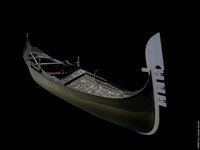Die gestärkte Haube ist hinten lose in 4 Falten gelegt. Die Falten sind durch ein Band fixiert. Vorn ist die Haube einmal umgeschlagen. Die Bindebänder sind zur Schleife gebunden. Innen befindet sich ein Stempel "Waldnieler Leinenhaus Johannes Klerks 4056 Schwalmtal".
Angaben zur Herkunft:
1990 - 2010
Herstellungsort: Schwalmtal, Deutschland
Gebrauchsort: Berlin-Spandau, Deutschland (Diakonissenhaus Bethanien)
en

